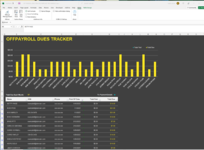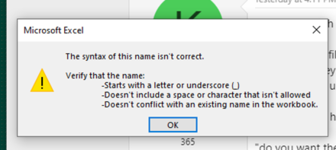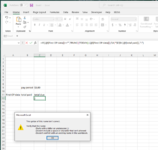Hello,
I am using the Dues Tracker template from Microsoft to track dues in my organization however, dues are paid biweekly for the pay period ending. I do not know how to change this formula from monthly to biweekly and any help would be greatly appreciated...
=IFERROR(IF([@[First OP Date]]<>"",([@[Months member]]*MonthlyDues)-[@[Total Paid]],""),"")
Thanks,
Kookejar
I am using the Dues Tracker template from Microsoft to track dues in my organization however, dues are paid biweekly for the pay period ending. I do not know how to change this formula from monthly to biweekly and any help would be greatly appreciated...
=IFERROR(IF([@[First OP Date]]<>"",([@[Months member]]*MonthlyDues)-[@[Total Paid]],""),"")
Thanks,
Kookejar








